Table of Contents
Volume 6, Issue 4
April 4, 2013
NRAO eNews
Volume 6, Issue 4 • April 4, 2013
Upcoming Events
![]() 3rd VLA Data Reduction Workshop
3rd VLA Data Reduction Workshop
Apr 8 - 12, 2013 | Socorro, NM
![]() Transformational Science with ALMA: From Dust to Rocks to Planets
Transformational Science with ALMA: From Dust to Rocks to Planets
Apr 8 - 12, 2013 | Kona, Hawaii
![]() ALMA in the Coming Decade: A Development Workshop
ALMA in the Coming Decade: A Development Workshop
Apr 18, 2013 | Charlottesville, VA
![]() 2013 NSF Large Facilities Operations Workshop
2013 NSF Large Facilities Operations Workshop
Apr 23 - 25, 2013 | Socorro, NM
![]() 2013 NRAO Postdoctoral Symposium
2013 NRAO Postdoctoral Symposium
Apr 29 - May 01, 2013 | Green Bank, WV
![]() Radio Astronomy in the LSST Era
Radio Astronomy in the LSST Era
May 6 - 8, 2013 | Charlottesville, VA
![]() The Second China-US Workshop on Radio Astronomy Science and Technology
The Second China-US Workshop on Radio Astronomy Science and Technology
May 13 - 17, 2013 | Shanghai Astronomical Observatory
![]() The Galactic Gas Supply Workshop
The Galactic Gas Supply Workshop
May 29 - 31, 2013 | Green Bank, WV
![]() AAS Plenary Session
AAS Plenary Session
Jun 4, 2013 @ 11:40am EDT | Indianapolis, IN
![]() AAS Splinter Session
AAS Splinter Session
Jun 4, 2013 @ 12:30 - 3:30pm EDT | Indianapolis, IN
![]() NAIC-NRAO Single-Dish School
NAIC-NRAO Single-Dish School
Jul 10 - 17, 2013 | Arecibo Observatory, Puerto Rico
![]() The Galactic Center: Feeding and Feedback in a Normal Galactic Nucleus
The Galactic Center: Feeding and Feedback in a Normal Galactic Nucleus
Sep 30 - Oct 04, 2013 | Santa Fe, NM
NRAO Key Project Complements New Planck Results
James Braatz
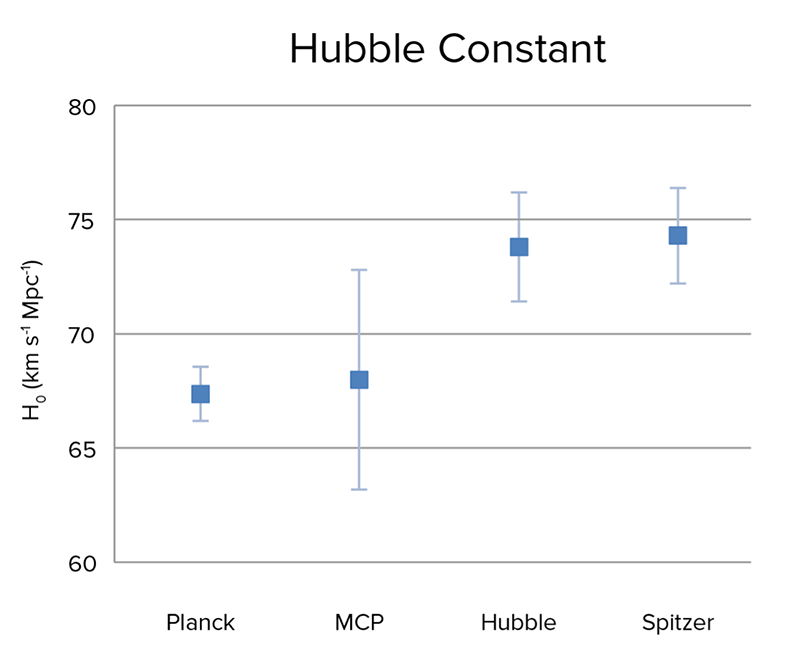
On 21 March, the European Space Agency released initial results from the Planck space telescope showing the most detailed Cosmic Microwave Background (CMB) image yet observed. In the context of a standard, "baseline" cosmological model, the Planck results predict H0 = 67.3 ± 1.2 km s-1 Mpc-1. This prediction disagrees with recent high-precision H0 measurements based on standard-candle observations made with the Hubble Space Telescope and the Spitzer Space Telescope: H0 = 73.8 ± 2.4 km s-1 Mpc-1 (Riess et al. 2011) and H0 = 74.3 ± 2.1 km s-1 Mpc-1 (Freedman et al. 2012). If real, the discrepancy requires new physics beyond the baseline cosmological model. It may indicate, for example, the existence of a new class of neutrinos, or that dark energy takes a dynamical form rather than being a cosmological constant. Another possibility is that the Cepheid-based measurements of H0 have unrecognized systematic uncertainties.
The Megamaser Cosmology Project (MCP) is an NRAO Key Science project to measure H0 geometrically via observations of circum-nuclear water vapor maser disks in the nuclei of active galaxies. The MCP images maser disks using a sensitive array of large radio telescopes including the Green Bank Telescope, Very Long Baseline Array (VLBA), and Effelsberg telescope. Measuring H0 in a single step that does not depend on a “distance ladder,” the megamaser technique avoids the standard-candle assumptions that historically have been prone to unrecognized systematic uncertainties.
Two recent MCP papers (Reid et al. 2013, Kuo et al. 2013) used maser distances to the galaxies UGC 3789 and NGC 6264 to determine H0 = 68.6 ± 5.6 km s-1 Mpc-1. When combined with preliminary results from additional galaxies, the MCP determines H0 = 68.0 ± 4.8 km s-1 Mpc-1 (Braatz et al. 2013).
The local, independent measurement of H0 by the MCP provides a valuable complement to the exquisite Planck observations and matches the Planck prediction for H0, though the MCP error bars are still formally consistent with the Cepheid-based results. Ongoing MCP observations of additional megamaser galaxies include the phased Jansky Very Large Array in the very long baseline interferometry array and will further reduce the formal error of the MCP measurement of H0.
References
Braatz, James; Reid, Mark; Kuo, Cheng-Yu; Impellizzeri, Violette; Condon, James; Henkel, Christian; Lo, K. Y.; Greene, Jenny; Gao, Feng; Zhao, Wei, 2013, IAUS 289, 255.
Freedman, Wendy L.; Madore, Barry F.; Scowcroft, Victoria; Burns, Chris; Monson, Andy; Persson, S. Eric; Seibert, Mark; Rigby, Jane, 2012, ApJ, 758, 24.
Kuo, Cheng-Yu; Braatz, James A.; Reid, Mark J.; Lo, Fred K. Y.; Condon, James J.; Impellizzeri, Caterina M. V.; Henkel, Christian, 2013, ApJ in press; arXiv:1207.7273.
Reid, M. J.; Braatz, J. A.; Condon, J. J.; Lo, K. Y.; Kuo, C. Y.; Impellizzeri, C. M. V.; Henkel, C., 2013, ApJ in press; arXiv:1207.7292.
Riess, Adam G.; Macri, Lucas; Casertano, Stefano; Lampeitl, Hubert; Ferguson, Henry C.; Filippenko, Alexei V.; Jha, Saurabh W.; Li, Weidong; Chornock, Ryan, 2011, ApJ, 730, 119.
ALMA Inauguration
Charles Blue
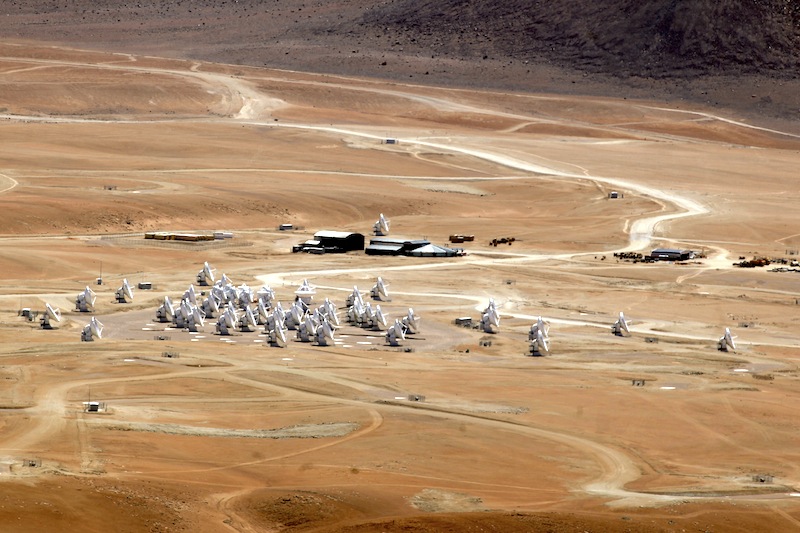
Figure 1: Fifty-five antennas from all three partners are now installed at the ALMA high site, 16,500 ft above sea level in the Chilean Andes.
Image credit: C. Padilla, NRAO/AUI/NSF
On 13 March, after nearly three decades of planning, engineering, and construction, representatives from the international astronomical community came together in a remote part of the Chilean Andes to welcome in a new era of discovery with the official inauguration of the Atacama Large Millimeter/submillimeter Array (ALMA). (Figure 1) The ceremony, which was viewed around the world, conveyed both the excitement of what ALMA will achieve as well as the universal appreciation for the diverse talents that have brought this amazing observatory to fruition.
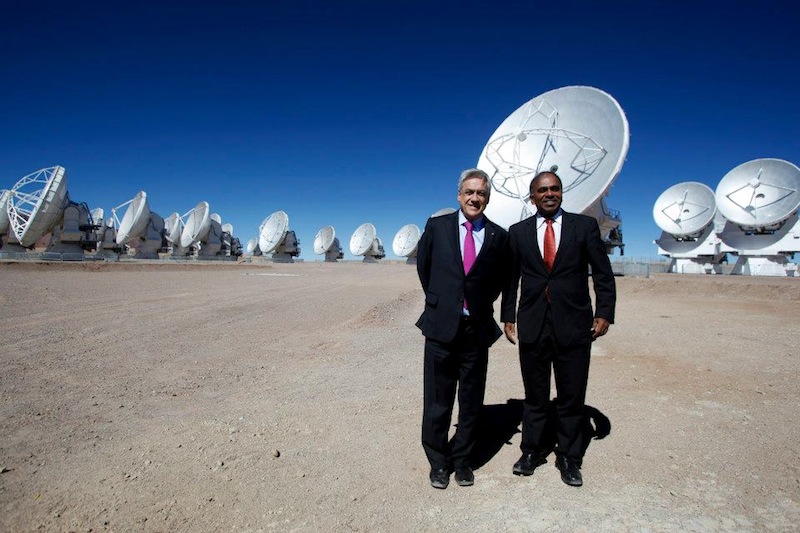
Figure 2: Chilean President Sebastián Piñera and NSF Director Subra Suresh visit the ALMA high site.
Image credit: C. Padilla, NRAO/AUI/NSF
The staff members at the Joint ALMA Observatory (JAO) and the ALMA partners did an excellent job preparing the ALMA Operations Support Facility (OSF) for the event. As invitees mingled with friends and colleagues, visiting VIPs, including outgoing NSF Director Subra Suresh and Chilean President Sebastián Piñera, were treated to a visit to the Array Operations Site (AOS) to personally inspect the ALMA antennas and get a first-hand “high site” experience. (Figure 2)
The inauguration ceremony featured presentations by ALMA Director Thijs de Graauw and NSF Director Suresh, among others. A congratulatory video from U.S. astronaut Tom Marshburn and Canadian astronaut Chris Hadfield, recorded on board the International Space Station as part of Expedition 34 (Figure 3), was a highlight.
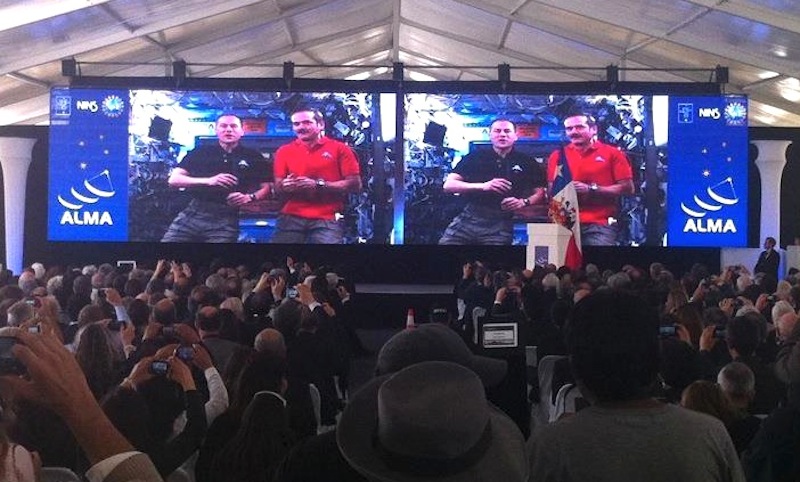
Figure 3: From the International Space Station, Canadian Space Agency astronaut Chris Hadfield and NASA astronaut Thomas Marshburn congratulate North America and its partners on the Inauguration of ALMA.
Image credit: T. Burchell, NRAO/AUI/NSF
Closing out the ceremony, President Piñera spoke about the importance of astronomy to Chile and the pride that his nation takes in enabling world-class research. Through a live video feed to the high site, Piñera gave the command to point the array at the Galactic Center, symbolizing the launch of ALMA as the world’s premier astronomical observatory.
The previous day, more than 50 international reporters, including 12 who traveled with NRAO, attended a press day at the AOS and OSF that included a press conference. The day concluded with an AOS tour, and numerous interviews with scientists and support staff. NRAO’s press events started even earlier, with a reception and presentation at an AUI co-sponsored radio astronomy exhibit titled A New Window on the Universe located in one of Santiago’s busiest metro stations.
This Inauguration was a fitting celebration to mark ALMA’s transition from a construction project to an extraordinarily capable, international observatory that is already impacting numerous fields of astrophysics.
ALMA Project News
Al Wootten
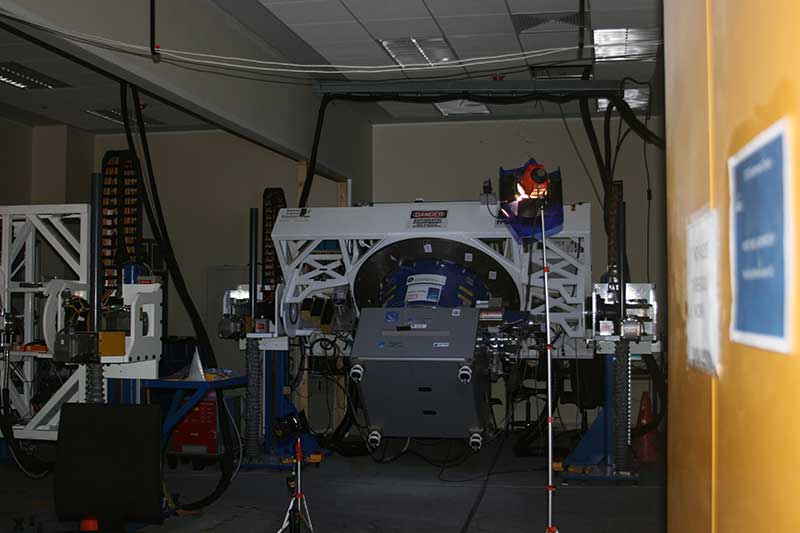
Figure 1: North American Front End Test and Measurement System assembled at the Operations Support Facility in Chile.
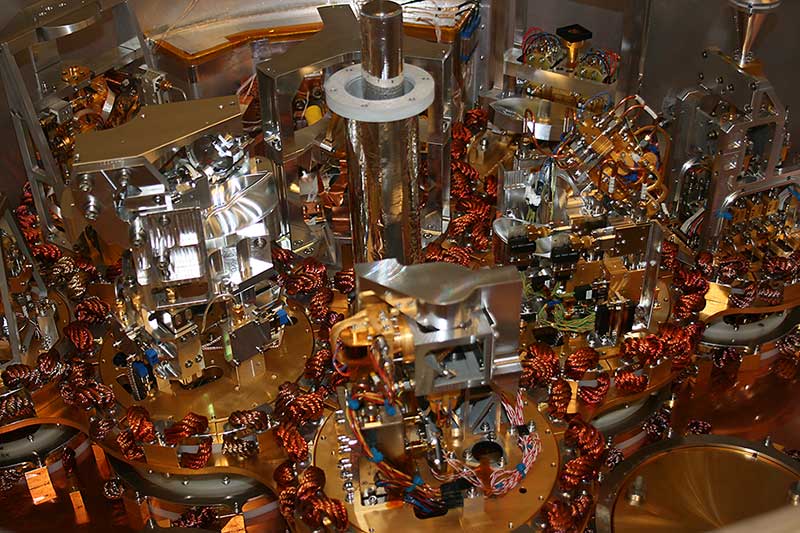
Figure 2: A view into the ALMA Front End: eight ALMA cartridges are visible, all except Band 1 and Band 2.
At the ALMA Inauguration (see separate article) there were 55 antennas at the Array Operations Site. Since that time, one antenna has been moved back to the Operations Support Facility for maintenance.
One highlight of the period was the reassembly and requalification of the Front End Test and Measaurement System (FETMS) at the Operations Support Facility by a team consisting of Morgan McLeod, Jack Meadows, John Buchanan, Erik Gaines, and John Effland from Charlottesville. After the test system was reassembled, front end (FE) SN 61 was mounted to the tilt table. A subset of the measurements were then performed which had previously been done during FE 61 Provisional Acceptance in-house at the North American Front End Integration Center to verify performance. Handover will be completed at a scheduled review. The installation was reviewed by guests at the ALMA Inauguration, where a view was provided inside a front end assembly that had eight receiver cartridges installed.
Please watch the ALMA Science Portal for news on the progress of ALMA observations and other events.
ALMA in the Coming Decade: A Development Workshop
2013 April 18
Al Wootten
A Workshop to provide information on ALMA Development will be held 18 April, with a Call for Proposals for ALMA Development Studies to follow soon after on 1 May 2013.
ALMA Early Science results have been pouring out, and more than 30 papers have now been published on a wide range of topics. Installation and commissioning of the final receiver bands funded for construction has begun. In commissioning and Early Science, ALMA has operated at wavelengths from 3mm to 0.3mm across a decade of nearly complete frequency access as enabled by its broad bandwidth receivers, powerful correlators and spectacular site. Having invested ~$1.3B to realize the biggest historical advance in ground-based astronomy, it is vital to maintain and expand its capabilities.
The ALMA Operations Plan envisages an ongoing program of development and upgrades that may include hardware, software, or data analysis tools. With a modest investment, ALMA will continue to lead astronomical research through the 2011-2020 decade and beyond. Construction of the first post-construction receiver bands, phasing hardware, and new data analysis tools has commenced in North America partially under a program of Development Studies submitted in response to a Call issued in November 2011. In response to that Call, 21 submissions were received involving 77 investigators from 26 institutions. After review by an external panel, eight proposals were funded; these are now reaching the end of their funding periods.
A new Call for Development Studies will be issued 1 May 2013, followed by a Call for Development Projects about a month later. To support this new Call, an informational workshop will be held, with participation available via video and audio links, on Thursday 18 April 2013 at NRAO headquarters in Charlottesville, VA. An overview of the current ALMA Development Plan and studies now under way will be given. The Workshop will be available via web stream and remote participants will have the opportunity to make presentations or to ask questions. To participate, please register via the website.
These Calls are intended to attract proposals for innovative ideas that address current and future scientific opportunities with ALMA. All interested parties located within the North American ALMA partnership are eligible to participate in these studies.
The primary aims of these studies are to:
- give groups in North America the opportunity to propose ALMA upgrades that may later be implemented as part of the ALMA Development Plan
- support the development of conceptual and detailed designs for ALMA upgrades, and
- encourage relevant long-term research and development in areas important for ALMA
The completed studies will be used, together with similar studies from the other ALMA partners, to augment and implement the ALMA Development Plan.
This Month @ the NAASC
High Redshift, Gravitationally Lensed, Dusty Starburst Galaxies Revealed by the SPT and ALMA
Even in Cycle 0, ALMA has already proven itself to be a powerful tool for cosmological studies. In a recent study of millimeter-wave detected sources from the 1,300 square degree South Pole Telescope (SPT) SZ survey, J.D. Vieira (Caltech) and his collaborators used ALMA to image 47 SPT sources with 1.4mm flux densities greater than 20 mJy. These 47 sources were selected after filtering out nearby IRAS galaxies and flat spectrum radio galaxies. At these bright flux densities, the remaining discrete 1.4mm emission is light from cosmologically distant galaxies that have been gravitationally lensed by massive, foreground elliptical galaxies. The candidate lenses were observed with ALMA at 3 mm and 870 microns, with the latter observations achieving a resolution of 0.5". Even with short integrations (1 minute), many of the submillimeter sources are clearly observed to be lensed.
The imaging observations were followed up with blind spectroscopic observations of 26 of the sources. Detections of CO emission from 23 lenses were made (see figure below), with at least 10 having redshifts in excess of 4 and infrared luminosities in the 1012-13 L(sun) range. This Cycle 0 ALMA study has doubled the number of z > 4 ultra-luminous infrared galaxies detected thus far from submillimeter spectroscopic surveys, and it has shown that the fraction of high-redshift dusty starburst galaxies is higher than previously thought.

February 2013 ALMA Data Reduction Workshop
The North American ALMA Science Center (NAASC) hosted an interactive ALMA data reduction workshop at the NRAO Headquarters in Charlottesville, VA 28 Feb – 1 Mar 2013. The aim of this workshop was to assist observers in becoming familiar with the ALMA data format and in learning how to use the available data reduction and analysis tools. The program included a combination of lectures and hands-on sessions aimed at introducing the key concepts in interferometry data reduction and demonstrating their application in the Common Astronomy Software Applications (CASA) package. Nineteen astronomers participated in the Workshop. The Workshop lecture notes are available on-line.
2013 Jansky Fellowships Awarded
The NRAO Jansky Fellowship program provides outstanding opportunities for research in astronomy. Jansky Fellows formulate and carry out investigations either independently or in collaboration with others within the wide framework of interests of the Observatory. The program is open each fall to candidates with interest in radio astronomy instrumentation, computation, and theory, and prior radio experience is not required. Multi-wavelength projects leading to a synergy with NRAO instruments are encouraged. We are pleased to announce that two new Jansky Fellows will be joining NRAO in the fall of 2013.
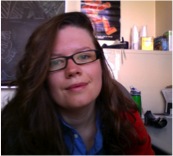
Betsy Mills is completing her Ph.D. with Mark Morris at UCLA on studies of the Galactic Center. She has performed groundbreaking work on warm, dense gas in molecular clouds in the inner few parsecs of the Galaxy. As a Jansky Fellow, Betsy will work to build a complete picture of the physical conditions in the Galactic Center gas from the largest to the smallest scales. She will begin her Jansky Fellowship in Socorro, New Mexico this fall.
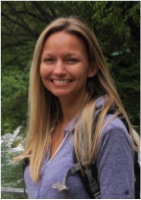
Jackie Hodge is a postdoc at the Max Plank Institute for Astronomy working with Fabian Walter, having obtained her Ph.D. from UC Davis working with Robert Becker on the Faint Images of the Radio Sky at Twenty-Centimeters (FIRST) survey. She is an expert on centimeter and millimeter observations of galaxy formation at high redshift, with extensive VLA and ALMA experience. As a Jansky Fellow, she plans to utilize the growing capabilities of ALMA, along with the Jansky VLA, to work toward a more comprehensive understanding of the build-up of galaxies over cosmic time. She will be taking her fellowship to the North American ALMA Science Center in Charlottesville, VA.
Monitoring SgrA* and its Interaction with the G2 Gas Cloud
Lorant Sjouwerman & Claire Chandler
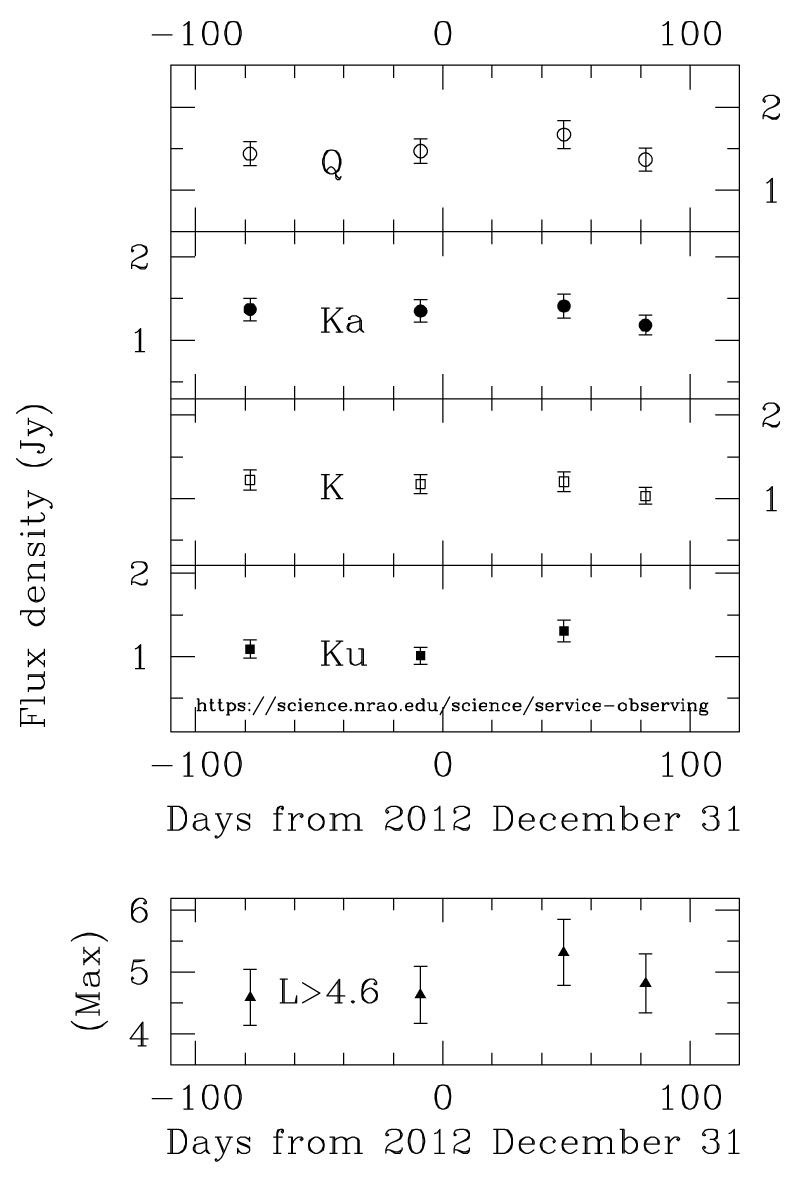
Since the announcement of the planned response of the G2 encounter with SgrA* in the Galactic center, NRAO has been undertaking bi-monthly VLA monitoring observations in advance of the expected encounter in mid-2013.
The Jansky Very Large Array (VLA) monitoring data are being obtained under project code TOBS0006, and the raw data are available through the NRAO Archive. Photometry, calibrated visibility data, and some images are posted at the NRAO Service Observing page.
Currently four epochs of an anticipated 13 observations have been obtained: two in A configuration and two in D configuration. The measurements are consistent with no changes in flux density for Sgr A* within the measurement errors for the higher frequency bands. For the lower frequency bands only upper limits can be derived from the D configuration data, due to the extended structure around Sgr A*.
The figure plots the measured flux densities of Sgr A* for Q, Ka, K and Ku bands as function of time with their 10% error bars. Also shown is the maximum visibility flux density at L band for baselines longer than 4.6kλ: these comprise the baselines that overlap between A and D configuration, and do include emission from SgrA-West, but should be less affected by the extended structure surrounding SgrA* that dominates the emission at the lower frequency bands in the compact configurations. The photometry and calibrated visibility data can be found on the Service Observing page.
NRAO will continue to monitor the flux density of Sgr A*, and will modify the observing cadence as needed to accommodate new predictions for the date of the expected encounter. New monitoring measurements will be made available as soon as possible through the Service Observing page and through The Astronomer's Telegram.
The Galactic Center: Feeding and Feedback in a Normal Galactic Nucleus
Lorant Sjouwerman, Juergen Ott & Cornelia Lang
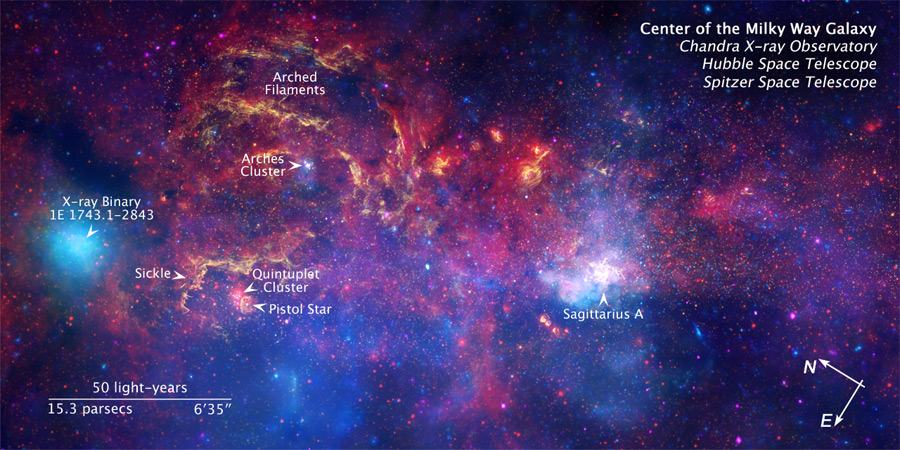
Building upon a long tradition in the Galactic Center community of holding a series of regular international meetings, and in light of the first new results with the Karl G. Jansky Very Large Array and the Atacama Large Millimeter/submillimeter Array, NRAO is organizing the next Galactic Center meeting in New Mexico (USA). This meeting is co-sponsored by the International Astronomical Union and designated IAU symposium 303.
This 5-day symposium will be held in Santa Fe, New Mexico, USA during 30 September 2013 to 4 October 2013. A program of invited review presentations and contributed speakers will be complemented by poster sessions, extended workshop-like discussion sections and time for informal professional and social interactions. Select topics inculde:
- The Role of the Galactic Bar and Central Molecular Zone ISM in Nuclear Activity
- Galactic Center Stellar Population and Feedback in Galactic Nuclei
- Astrophysics and Feedback in the SgrA* Environment and in Other Galactic Nuclei
- Recent results relating to the SgrA* Encounter with Cloud G2
Registraton will open early April 2013. Requests for partial funding support must be received by April 19. Please consult the meeting web page, which contains important information about scientific contributions, registration, financial support, etc. For further information and questions please contact iau303@nrao.edu.
The Galactic Gas Supply: Neutral Hydrogen in the Local Universe
Jay Lockman
Recent observations in the UV and 21cm lines have provided evidence that very low-level amounts of neutral gas may be common around galaxies and in galaxy groups. Theoretical arguments suggest that such gas might arise from a number of sources including cold mode accretion and galaxy interactions, and may be a trace constituent of much larger amounts of gas.
To explore this topic a workshop will be held 29-31 May 2013 at the NRAO in Green Bank WV. The workshop will focus on recent observational and theoretical work on the existence and properties of very low column density neutral hydrogen in the local Universe, including:
- The extreme edges of gaseous galaxy disks
- The neutral component of intergalactic and circumgalactic gas
- Galaxy growth through accretion of neutral gas
- The relationship of faint neutral gas to other components
The intimate setting of the NRAO Green Bank Observatory fosters highly interactive meetings. Because of physical limitations, the workshop will be restricted to about 50 participants.
Scientific Organizing Committee
Robert Braun, CSIRO
Jay Lockman, NRAO Green Bank
D.J. Pisano, West Virginia University
Mary Putman, Columbia University
Mike Shull, University of Colorado
Further information and a pre-registration form are available on-line.
Comets to Cosmology: Science, Technology, and Education with the Green Bank Telescope
Jay Lockman
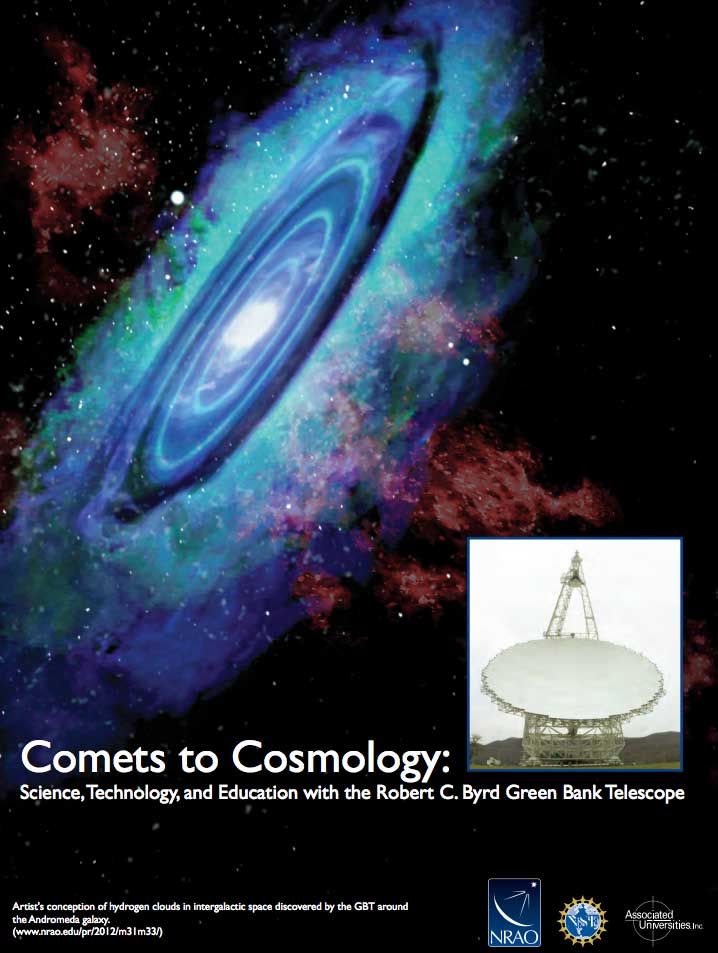
A new document is available that features the current scientific program of the Green Bank Telescope, as well as the broad range of other activities that take place at NRAO–Green Bank. Comets to Cosmology: Science, Technology, and Education with the Robert C. Byrd Green Bank Telescope has sections describing the telescope, its current and future research, technical developments, and the broader impacts of the Observatory with an emphasis on Science, Technology, Engineering, and Math (STEM) education and outreach programs. There is a description of the site and the National Radio Quiet Zone, lists of representative GBT proposals scheduled in recent months, and sections on university collaborations, and training programs. Comets to Cosmology is available on-line, along with a companion document that describes recent GBT discoveries.
Reflectionless Filter Patent Issued to NRAO Engineer
Shing-Kuo Pan and Eric Bryerton
Filters are used in almost all electronic systems to define the operating frequency range and prevent unwanted, out-of-band energy from propagating to downstream components. This is important to improve dynamic range, suppress spurious signals and image bands, and limit interactions between high- and low-frequency components. In conventional filter structures, however, this is accomplished by reflecting the stop-band portion of the spectrum back to the source, which can sometimes cause problems of its own, usually through interaction with frequency-converting elements like multipliers or mixers. These issues are increasingly important as technology trends toward broader-bandwidth components and more tightly integrated systems.
A recent patent issued by the US Patent and Trademark Office to Dr. Matt Morgan, a research engineer at the NRAO Central Development Laboratory (CDL), concerns a novel circuit structure comprising a "Reflectionless Filter," wherein the stop-band energy is absorbed internally rather than being reflected back to the source. In microwave terminology, the input impedance is theoretically constant at all frequencies (pass-band, stop-band, and transition-band). This prevents the build-up of out-of-band standing waves and eliminates interactions between components operating at different frequencies. It also makes them cascadable, so that small filtering elements may be placed at multiple points throughout the signal path to optimize sensitivity and dynamic range.
These filters, which can be low-pass, high-pass, band-pass, band-stop, and even multi-band, are very easy to implement and have a number of advantages in addition to the reflectionless property for which they were developed. Despite exhibiting a third order, inverse Chebyshev response, all elements of a single type – resistor, inductor, or capacitor – have the same value, no matter what the order of the filter. Not only does this simplify design, fabrication, and tuning, it limits the required elements to more nominal values that extend the applicable frequency range for a given technology. The filter response is also more stable with respect to component variation (e.g., with temperature) than conventional filters. Finally, despite containing resistive elements, the insertion loss of these filters in the pass-band is nominally zero, and is degraded less by low-Q components than their conventional filter counterparts.
Recent Press Releases

ALMA Finds 'Monster' Starburst Galaxies in the Early Universe
13 Mar 2013
Astronomers using the Atacama Large Millimeter/submillimeter Array (ALMA) telescope have discovered starburst galaxies earlier in the Universe's history than they were previously thought to have existed. Read more…

Astronomers Celebrate New Era of Discovery with ALMA Inauguration
13 Mar 2013
ALMA, the Atacama Large Millimeter/submillimeter Array, was officially inaugurated today in a ceremony that brought together representatives from the international astronomical community. Today's event marked the formal beginning of ALMA's decades-long journey of discovery. Read more…
Career Opportunities
New Postings
Science Support and Archive (SSA) Software Group Lead: The NRAO in Socorro, NM is seeking a Science Support and Archive (SSA) Software Group Lead to manage the Science Support and Archive (SSA) software group. The SSA group is responsible for most NRAO software with which astronomers directly interact.
LO/IF Technician: The NRAO in Socorro, NM is recruiting for a LO/IF Technician. Under general supervision from scientists and engineers the LO/IF Technician devises, layouts, fabricates, calibrates, tests, analyzes, troubleshoots and/or repairs astronomical research related equipment such as: computers, electronics, electrical, cryogenics, and lasers.
ALMA Control System Developer: The NRAO in Socorro, NM is seeking an ALMA Control System Developer. The selected candidate for this position will participate in the development of new features across this architecture, as well as be responsible for maintaining the existing code, debugging problems and providing support for the telescope operations in Chile.
Assistant or Associate Scientist: The NRAO in Charlottesville, VA invites applications for a scientist position. The appointment will be for a period of 2 years (with the possibility to apply for future openings as an internal candidate). The appointment will be made at the assistant or associate level according to experience level. The primary duties of the successful applicant will be to assist in the ALMA data calibration, imaging, and packaging, and with providing one-on-one support to ALMA users.
Data Analyst: The National Radio Astronomy Observatory in Charlottesville, VA is recruiting for a Data Analyst. The primary goal of the Data Analyst will be to provide assistance to Observatory users by focusing on data reduction and assessment of the quality of the data, as well as pipeline operations and testing of ALMA early science data products.
VLBA Station Electronics Technician: The NRAO in Socorro, NM is accepting applications for a VLBA Station Electronics Technician. The successful candidate will be responsible for repairs and maintenance at the Very Long Baseline Array (VLBA) Station, including the 25-meter antenna and support equipment. The technician must respond to emergency repair situations as dictated by the impact on the station's ability to perform intended functions.
STEM Education Development Officer-AUI: Associated Universities Inc. (AUI), in Washington, DC is recruiting for a STEM Education Development Officer. The incumbent will be based at the National Radio Astronomy Observatory (NRAO) in Charlottesville, VA and work closely with the NRAO Education and Public Outreach (EPO) team, under the supervision of the Assistant Director for EPO. The STEM Education Development Officer will identify and implement opportunities for AUI to contribute to the advancement of STEM (science, technology, engineering, and math) education via partnerships, grants, and the leveraging of existing NRAO and other AUI assets, which include a large staff of scientists and engineers and a talented, geographically dispersed EPO staff.
From the Archives
Ellen Bouton

About this month's photo: The ALMA inauguration was preceded by many years of work, including exploration and evaluation of many sites and the evolution and eventual merging of millimeter/submillimeter array projects from different countries. US community science workshops on the design of a synthesis array for millimeter-wave astronomy were first held in 1982 and continued through 1989. In July 1990, NRAO submitted a proposal for a millimeter array to NSF, and in 1991 the decadal report of the National Research Council's Astronomy Survey Committee recommended the Millimeter Array (MMA) as the highest priority ground-based astronomy project for the 1990s, so planning and site research for the MMA intensified at NRAO. Some of the earliest sites considered for the MMA were in New Mexico near the Very Large Array.
This photo from early 1992 was taken at the proposed center of the MMA site in the Magdalena Mountains, now the site of the Magdalena Ridge Observatory Interferometer, looking north toward the South Baldy summit. Visiting observer Don Backer with NRAO staff members Joan Wrobel, Dave Wunker, and Phil Dooley, make one of the frequent visits to that site to check snow levels and tipper data. Craig Walker says Backer's skis and poles were borrowed: "Don's participation in one of our South Baldy trips is something we remember well. He was here on other business and had to borrow gear. Hence the blue jeans (rather inappropriate for a ski trip) and the satchel rather than a pack." Perhaps his upside pole is informally measuring snow depth? A crane at one of the New Mexico Tech research sites is just visible over the crest. Thanks to Peter Napier for the original slide and to Peter, Gareth Hunt, Craig Walker, Joan Wrobel, and Frazer Owen for identifying the people and for information about the visit.
From the Archives is an ongoing series illustrating NRAO and US radio astronomy history via images selected from our collections of individuals' and institutional papers. If readers have images they believe would be of interest to the Archives, please contact Ellen Bouton, ebouton@nrao.edu.

